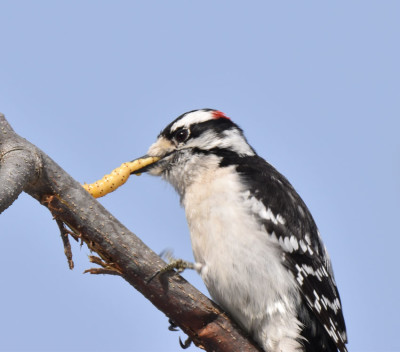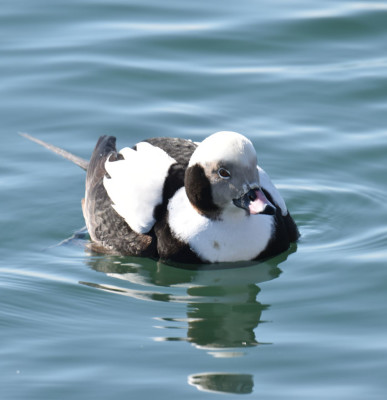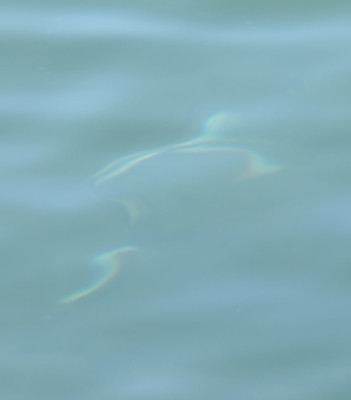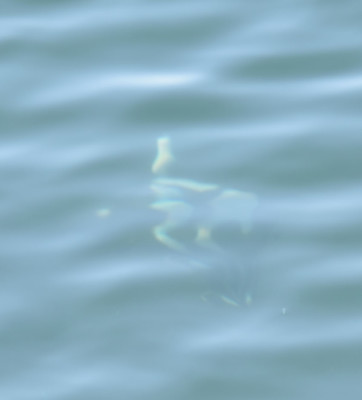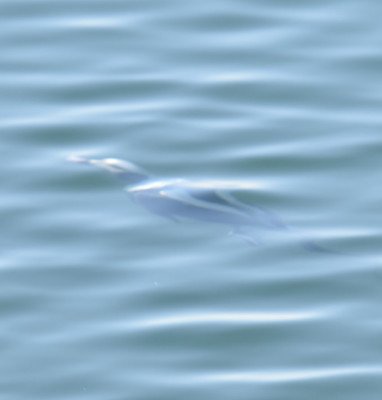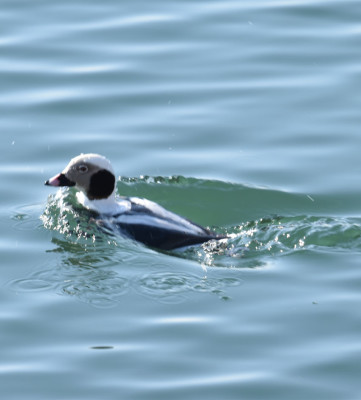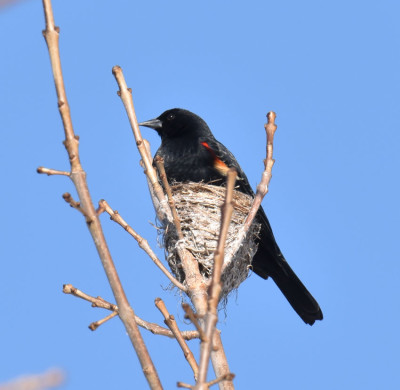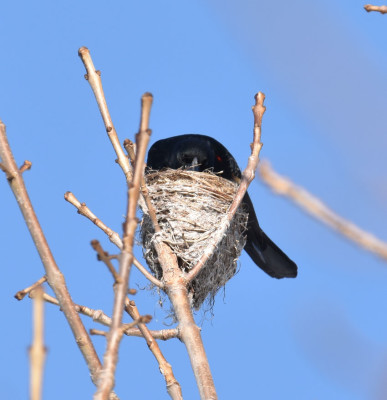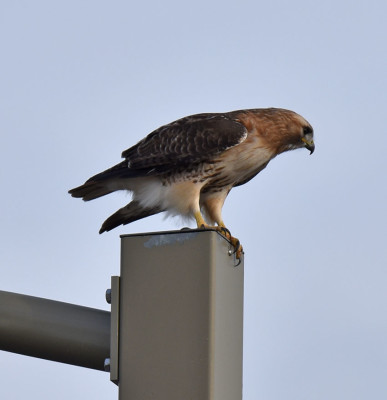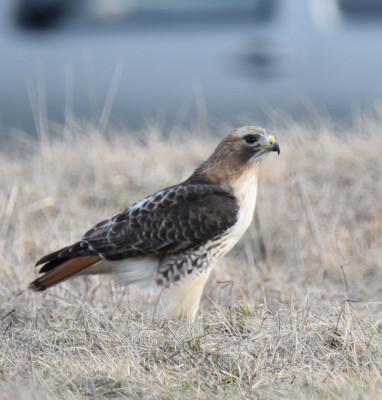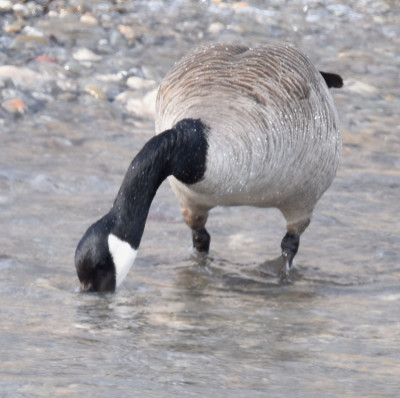There are many winter walks where I only see the same 7 kinds of birds. It doesn’t bother me, though, because the birds’ behaviour is often interesting. It’s not unusual for me to see something I never knew before even from a bird I’ve seen hundreds of times. Here’s a few scenes from recent rambles in Mississauga where I spent some time watching “the winter regulars” search for food.
Downy Woodpecker Extracting a Carpenterworm Caterpillar
(If you aren’t keen on insects, you might want to scroll quickly past the next couple of photos.)
UPDATE: An entomologist from Colorado has suggested that this is more likely a Leopard Moth larvae. This is a moth in the same family as the Carpenterworm but is a species introduced to North America sometime in the late 1800s. A reference is provided on BugGuide to the identifying text, “Guide to Insect Borers in North American Broadleaf Trees and Shrubs.” I greatly appreciate the help of experts like this in identifying local wildlife!
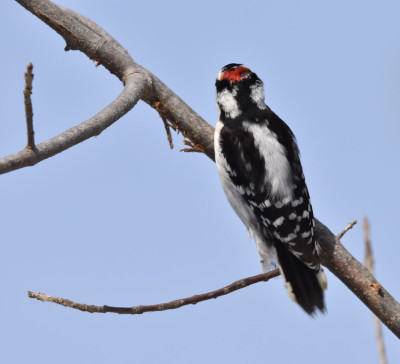
Note the hole on the underside of the branch just above the Downy.
While leaving the Rattray Marsh on March 5, I heard a tapping sound very close by. I looked and saw a male Downy Woodpecker rapping briskly on the leading branch of a very small sapling beside the trail. To be honest, I thought to myself “He won’t find anything there. Why is he even trying?” Then I waited while a couple walked towards me and passed obliviously underneath a bird that they could have stretched out and petted if they’d noticed it.
I decided I should take some photos of the Downy as the light was excellent and he still hadn’t flown. When I lifted the lens to my eye, I was startled to see him wrestling a huge bright yellow caterpillar into submission. It was easily 4 cm or more (2 inches) in length. It was very hard to believe such a huge insect had been in that tiny tree stem yet the hole the Downy had made to get it out was clearly visible.
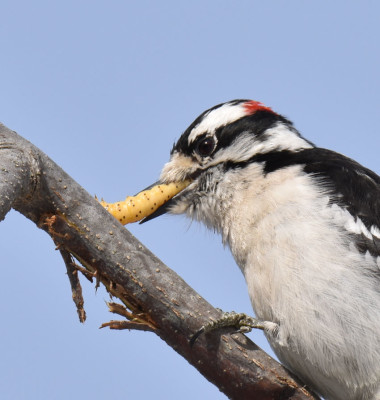
The Downy fiddled with the larva for a few moments to get it the way he wanted before he risked flying away with it.
After I got home, I tried to find out what kind of insect larva it was. The best guess from the kind folks at BugGuide.net is that it may be a Carpenterworm Moth caterpillar. It fits most of the characteristics of one although the bright yellow colouring is not a perfect match. (If anyone reading has an idea, please share it with a comment!)
Carpenterworm caterpillars can take years to mature enough to pupate into moths. As the name suggests, they actually bore holes through the tree trunks and it is not unusual that the woodpecker found this one resting underneath the bark.
The Downy didn’t appear to care exactly what it was. He carried if off happily to a larger tree a bit further from the path and ate it.
Long-tailed Ducks Dive Into Their Work
Watching the Long-tailed Ducks diving for their food, I wondered if the vivid white wing marks on the males are intended to be useful for other ducks looking for them from the surface. They show up pretty vividly even when the birds are down deep and moving quickly.
I have yet to get good photos of a diving duck but I enjoy watching them which generally leads to me taking even more fuzzy shots.
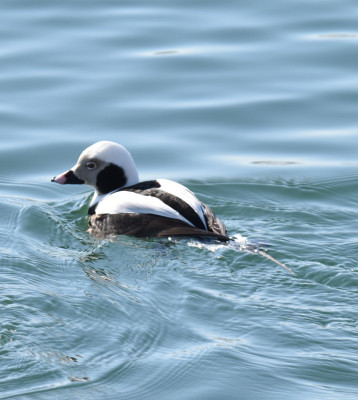
Notice that as soon as one emerges and realizes I’m nearby, it always starts to swim briskly away from me.
Red-winged Blackbird Hunting Through Old Nests for Insect Life
I’ve noticed several types of birds will poke through old nests in the spring time. They aren’t looking to fix them up; in fact, they often pull the nests apart, dropping leaves and twigs overboard. They seem to be looking for insects to eat. I’ve seen Blue Jays, Grackles and now Red-winged Blackbirds all behave this way.
Red-tailed Hawk Dives from Street Light to Land on Lunch
The other afternoon, I took a few minutes to hawk watch close to the 403 and Winston Churchill in Mississauga. While I was driving, my passenger had spotted a pair of Red-tailed Hawks sharing a street light pole, so I turned into a parking lot and stopped to try to take a photo or two.
By the time I parked, one hawk had moved three poles further away, but the other was still perched and was fairly intently watching the undeveloped land below.
A minute later, it swooped down onto the grass where it stayed for several seconds. Eventually, it lifted its prey enough to show me that it was a mammal. Most likely from the size, shape, colour and tail, it was a well-fed rat. The hawk then carried its meal away, landing to eat it on yet another light pole.
Canada Geese Go Surfing
I’m sure we’ve all seen more Canada Geese eating lawn grass than we’d care to remember. So what caught my eye at Jack Darling Park this winter was a group of 3 geese hunting in the breaking surf. I’m not sure what the waves were bringing in but the geese were staring intently and then stabbing at the water.
None of these bird are unusual or rare even in winter but they all provide interesting little peeks into their daily lives if I take the time to watch them. And some, like the Downy, even introduce me to creatures I never knew existed!
Related Reading
Join In
Have you ever watched a common local bird and seen something new? Please share your experience with a comment.

